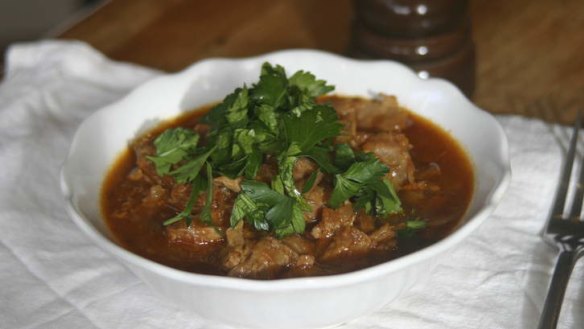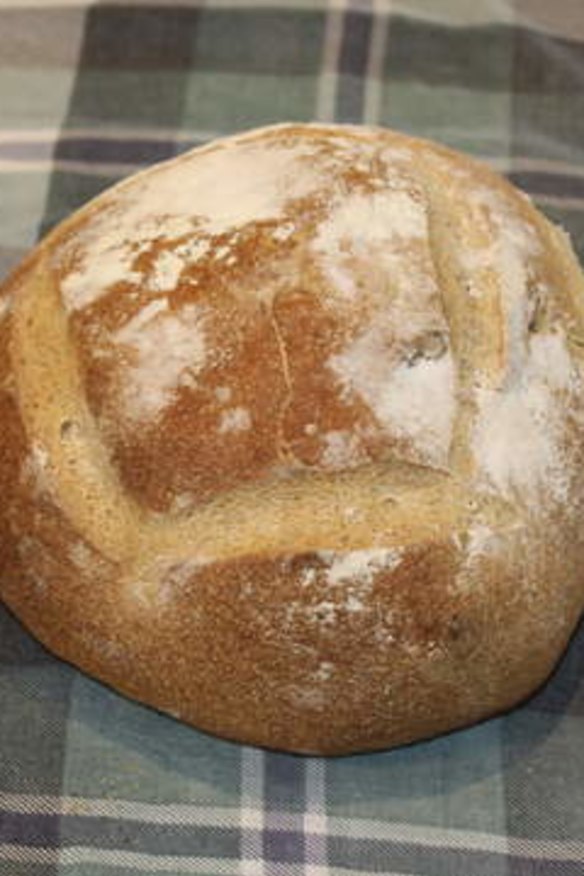Down the rabbit hole

"Now that factory chicken has completely replaced free-range chicken, one of the best-tasting fowls you can eat is rabbit." - Marcella Hazan.
I like the peasant attitude of making a meal out of what is on hand. And rabbits are something I have on hand, running rampant over our backyard. When we turn the car headlights on at night we see them scurry all over the place.
I could catch them myself, feeding my family the sweet little bunnies that steal the japonica leaves that are within reach of their little paws, not to mention my vegetables.

But I'm not sure how to catch rabbit without a gun. I could borrow my parents' dog, a very fast whippet called Dash, but he would never hand over the rabbit. I could get a ferret and send it down a hole, setting nets at the other end of the same warren, but I would end up with a live rabbit in a net and I would need to commit the final act. I decide I can't do that, so instead I buy wild rabbits from the markets.
Three trips to the market and six rabbits later, along with a healthy dose of perseverance, reading and recipes, I have settled on this rabbit ragu. So far, and to a limited audience - my family - this is going down well with rice, pasta or soft polenta.
Kate McKay is co-owner of Lynwood Preserves.
Rabbit ragu
2 rabbits, each cut into 5 or so pieces
¼ cup olive oil
¼ cup diced pancetta or bacon
1 large onion, finely chopped
2 carrots, finely chopped
2 celery sticks, finely chopped
4 garlic cloves, finely chopped
1 sprig rosemary
2 sprigs thyme
1 cup dry white wine
400g can chopped tomatoes or passata
3 tbsp tomato paste
3 cups water or stock
salt and pepper
⅓ cup parsley, chopped
grated parmesan
Preheat the oven to 180C. Brown the rabbit pieces in the oil in a enamelled cast-iron casserole dish, or similar (you need an oven-proof dish). Do this in batches to avoid overcrowding. Set the rabbit aside.
Add the pancetta, onion, carrots, celery, garlic, rosemary and thyme to the pot and cook over medium heat, stirring, until the onions are translucent.
Deglaze the pan with the wine. When the wine is almost all gone, put the rabbit back in, stir in the tomatoes, tomato paste and stock (enough to cover everything). Add half of the parsley and bring to a boil.
Cook the ragu in the oven with the lid on for a few hours. Keep an eye on the moisture and add water if needed.
When the meat starts to fall away from the bone, transfer the rabbit pieces to a plate, and when cool enough, pull the meat from the bones.
Return the meat to the casserole dish, adjust the salt and pepper and cook for another couple of hours or until you have a thick consistency and the meat is falling apart even more. You might need to add more water. If you find you need to get rid of excess water once the meat is ready, cook on high in the oven with the lid off.
Serve in bowls with rice, pasta or polenta and the ragu on top with some chopped parsley and parmesan.
Hearty wholemeal kumara bread
4 cups (250ml cups) white baker's flour
1 cup wholewheat flour
1 tbsp (20ml) salt
1 cup sourdough culture, or 1½ tsp instant dry yeast
1 cup red kumara (sweet potato)
2 cups warm water
1 tbsp olive oil
Mix the dry ingredients - flour, salt and instant yeast, if using. If using sourdough, add the cup of active culture. Boil, drain and mash the kumara and add to the mix.
Add the water and olive oil. Mix with a sturdy spoon. The result will depend on the humidity and the flour condition. If the dough is too wet, add more flour, and if too dry, add more water.
Tip on to a floured bench and knead until the dough becomes smooth and silky - at least 10 minutes.
Place the dough in a bowl and cover with cling film. Leave in a warm spot until it has doubled in size - for the instant yeast option, about three hours; for the sourdough, about four hours.
Divide the dough into two pieces and shape each as a round ball. Put on a steel baking tray, which has been sprayed with baking spray. Put in a warm place and cover with loose cling film or a moist tea towel. It helps to spray the dough surface with water from a spray bottle.
Allow about an hour for the dough to double again (this will depend on the temperature).
Preheat the oven to 220C. Slash the top of the loaves with a sharp knife a few times. Bake for 30 to 40 minutes. It is ready when the base of the bread is drummy when knocked. A surer test is to use a probe digital cooking thermometer. The middle of the bread should be between 94C and 98C.
Cool on a rack for an hour.
The best recipes from Australia's leading chefs straight to your inbox.
Sign up